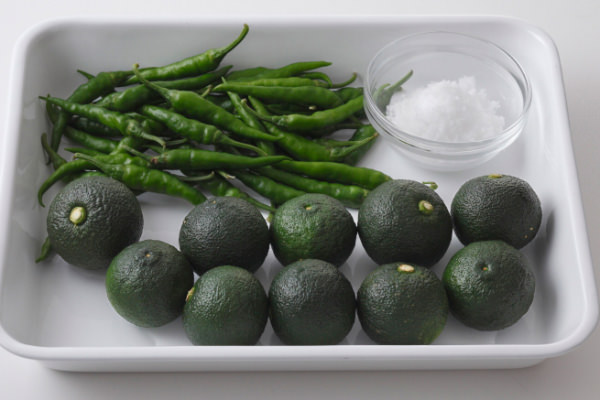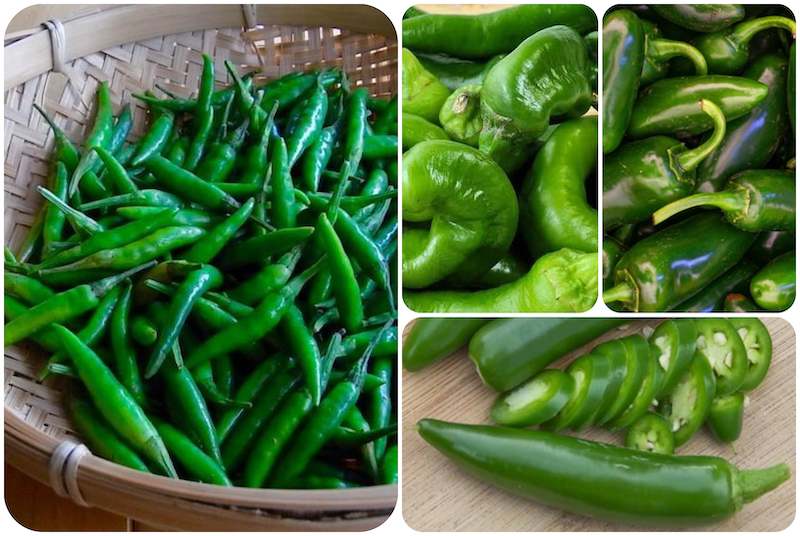
Yuzu Koshō
柚子胡椒
Mid-September…the heat of summer lingers on, but there is the promise of cooler autumn days ahead. That is when I typically see baskets of green yuzu in my Tokyo neighborhood markets and bags of green chili peppers, too. Within a month the yuzu will begin to ripen to yellow and the peppers to red, but while both are still green is the perfect time to make a spicy condiment known as yuzu koshō.
On hot days I’ll put a dab on hiya yakko tōfu or cold-poached fish or chicken. On cooler evenings, I’ll mix a bit with vinegar and soy sauce to use as a dip for nabemono hot-pots.

From left, clockwise: Aotōgarashi 青唐辛子, Shishitō 獅子唐, Jalapeño ハラペーニョ, Serranoセラーノ
The Japanese refer to extremely spicy foods as GEKI KARA 激辛. For this yuzu koshō recipe you decide how high you want to crank the heat by choosing the variety of capsicum: slender ao tō is the classic choice but chubby shishitō will be pleasantly tingly and very aromatic.




